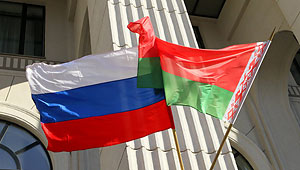Ru
|
Eng
Union State developing three new programs in electronics
31.03.2015

The Union State is developing three new programs in electronics, Deputy Director of the subsidiary of the research and development center Belmicrosystema Anatoly Belous said during an onsite press conference at OAO Integral Management Holding Company on 31 March, BelTA has learned.
“Import substitution is a burning issue for both us and Russia. New programs are developed in the Union State to address the issue. Three new programs are currently in development in the electronics sphere,” Anatoly Belous said.
One of the programs, Tekhnologiya SG, will be implemented jointly by the National Academy of Sciences of Belarus and Roscosmos. “The program has been coordinated in a number of ministries and will be submitted to the government this year. Its implementation will be started in 2016. We have a small project within the program. Other programs are currently waiting for the concepts to be developed,” Anatoly Belous said.
The company provided some results of the previous Union State program entitled Osnova (Foundation) that was implemented in 2010-2013. During its implementation Belarus developed and launched the production of 62 microcircuits, eight types of transistors, 16 types of stabilitrons, three types of double and special-purpose diodes, and a line of new technological processes. The results allowed OAO Integral expand its opportunities in the development of the electronic component base of the economic, double and special purpose. Partaking in the implementation of the program Osnova were nearly 40 research and development institutes of Belarus and Russia.
OAO Integral Management Holding Company designs, manufactures and exports microelectronics components and ready-made products. The company uses a full-manufacturing cycle from creating silicon substrates to integrated microcircuits and semiconductor devices, from microelectronic components to electronic equipment. The enterprise sells into 27 countries, with the Russian Federation as the main consumer.
“Import substitution is a burning issue for both us and Russia. New programs are developed in the Union State to address the issue. Three new programs are currently in development in the electronics sphere,” Anatoly Belous said.
One of the programs, Tekhnologiya SG, will be implemented jointly by the National Academy of Sciences of Belarus and Roscosmos. “The program has been coordinated in a number of ministries and will be submitted to the government this year. Its implementation will be started in 2016. We have a small project within the program. Other programs are currently waiting for the concepts to be developed,” Anatoly Belous said.
The company provided some results of the previous Union State program entitled Osnova (Foundation) that was implemented in 2010-2013. During its implementation Belarus developed and launched the production of 62 microcircuits, eight types of transistors, 16 types of stabilitrons, three types of double and special-purpose diodes, and a line of new technological processes. The results allowed OAO Integral expand its opportunities in the development of the electronic component base of the economic, double and special purpose. Partaking in the implementation of the program Osnova were nearly 40 research and development institutes of Belarus and Russia.
OAO Integral Management Holding Company designs, manufactures and exports microelectronics components and ready-made products. The company uses a full-manufacturing cycle from creating silicon substrates to integrated microcircuits and semiconductor devices, from microelectronic components to electronic equipment. The enterprise sells into 27 countries, with the Russian Federation as the main consumer.
SCIENCE. TECHNOLOGY. INNOVATIONS
13.08.2024
28.06.2024
28.06.2024
25.06.2024
05.06.2024
15.05.2024
15.05.2024
26.04.2024
26.04.2024
26.04.2024













